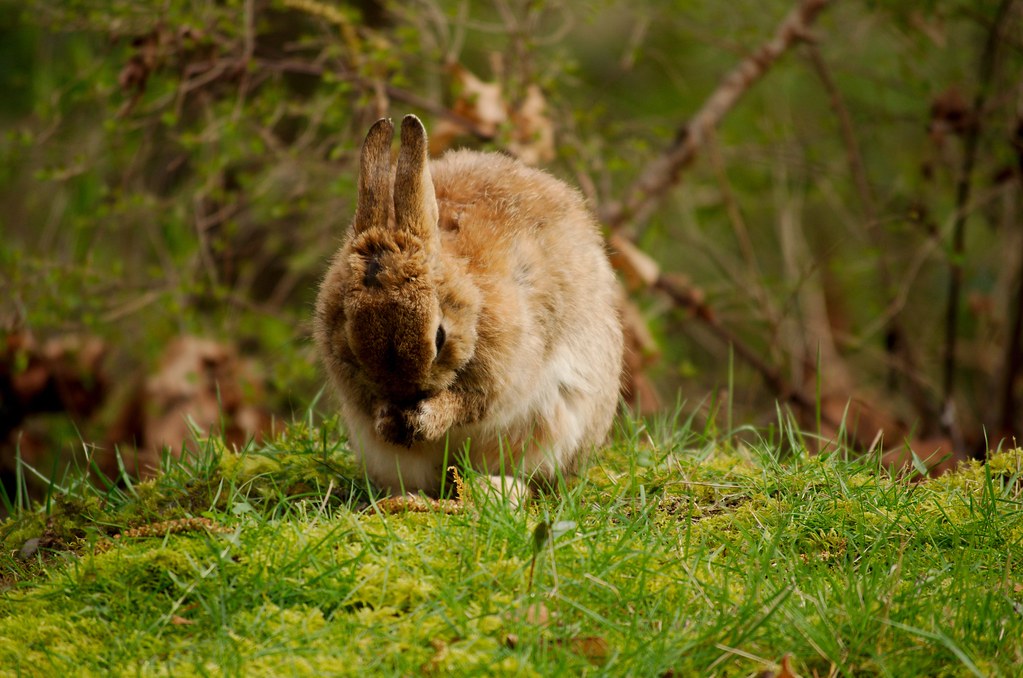What is flystrike? It’s a serious condition in rabbits and other pets. It’s painful, and it can turn deadly very quickly. It can happen at any time, but is especially prevalent in the summer months. Learn how to recognize the symptoms of flystrike and how you can help your rabbit if it happens.
Flystrike, or myiasis, is a serious condition that affects rabbits and other pets. Like many conditions in rabbits, it can become deadly in a matter of hours. It’s also very painful. If you stay vigilant, you stand a better chance of preventing it. And if you know what to look out for, then you can get help for your bunnies while there’s still time.
What is Flystrike in Rabbits?
Put simply, flystrike happens when flies, particularly the green bottle fly, lay their eggs in your rabbit’s fur, often around your rabbit’s bottom. The eggs hatch into maggots, and the maggots begin to eat your rabbit’s flesh. It’s disgusting and it’s painful, but worst of all, it can be deadly.
This can happen any time there are flies. However, there are more flies in the summer months, so your rabbit is more at risk of flystrike then.
Some rabbits are more prone to fly strike than others. Moisture, blood, urine, and faeces attract flies, so if your rabbit has difficulty keeping clean and dry due to injury, age, or physical condition, it could be more at risk. Open sores may also attract flies.
A fly can lay up to 200 eggs on your rabbit. Once those eggs hatch, the maggots can do a lot of damage in a very short amount of time.

If your rabbit has symptoms of fly strike, make sure to contact your vet right away. Don’t wait. You should call ahead, as well, so that your vet has time to prepare.
And speaking of symptoms…
What are the Signs of Flystrike in Rabbits?
Any time your rabbit stops eating or drinking, there’s a problem. This can also be a sign of flystrike.
Lethargy is also a common symptom of illness or pain.
Digging in the corners of the enclosure is often a signal that your rabbit is in pain and is trying to escape it.
You might also notice a strange but strong smell coming from your rabbit.
A lot of times, though, the first sign a person may notice is actual maggots on the rabbit or in the enclosure.
You can see what flystrike looks like in the video below.
My Rabbit has Maggots. What Should I Do?
You need to take your rabbit to the vet immediately. Don’t wait. If your usual vet isn’t open, go to an emergency vet.
Be gentle with your bunny and act calmly. Your pet is probably in a lot of pain and possibly in shock.
How Will My Vet Treat Rabbit Flystrike?
First, your vet will examine your rabbit. They may clip the fur around the affected area to have a better look.
Next, they will sedate your rabbit, so that they can remove the maggots without causing further pain. They will then remove as many of the maggots as they can.
After that, your vet may prescribe medications. There may be a medication to kill any remaining maggots and/or eggs. There may also be an antibiotic to stop infection. They may then give your rabbit medication for pain relief. And if your rabbit is in shock, your vet may also give them fluids.
Sometimes, unfortunately, flystrike may progress to the point that a vet can’t treat it. In this case the vet will recommend euthanasia.
Can Rabbits Recover from Flystrike?
Yes. But as with any medical condition, the sooner you catch and treat the problem, the better your rabbit’s chances for recovery.
Be sure to treat your rabbits extra gently once you bring them home. If they’ve suffered flystrike, they’ve been through a lot of pain and trauma, even if they’re doing their best to hide it.
Preventing Flystrike in Rabbits
The good news is, there’s a lot you can do to prevent this problem from happening in the first place.
First, check your rabbit’s fur every day. Look for maggots, check any wounds, and if the fur is wet or dirty, especially around your rabbit’s bottom, clean it. If your rabbit has trouble cleaning themselves, check twice a day.
Keep your eyes open for other signs of problems, such as lethargy or not eating.
Next, check your rabbit’s hutch for maggots. Also, look for soft faeces, which can be a sign that something is wrong.
Remove damp bedding and litter every day. Keep your rabbit’s enclosure as clean and dry as possible. Make sure your rabbits have access to plenty of hay and water. The fibre will help their faeces to pass normally, which will help keep it out of their fur.
Ask your vet about flystrike preventive treatments. There are commercial preparations that you can apply to your rabbits’ fur around their bottom that help to repel flies and prevent flystrike. You can see how to apply it in the video below.
It’s In Your Hands
Flystrike is painful, and it can turn deadly fast. However, if you know the symptoms, you can often catch the problem and treat it in time. And if you stay vigilant, keep your rabbit and its enclosure clean, and apply appropriate preventive treatments, you stand a good chance of preventing flystrike from happening in the first place.
Has your rabbit ever experienced flystrike? How did you treat it? And do you have any suggestions for our readers? We’d love to hear about it in the comments.

















Where r u located jessica